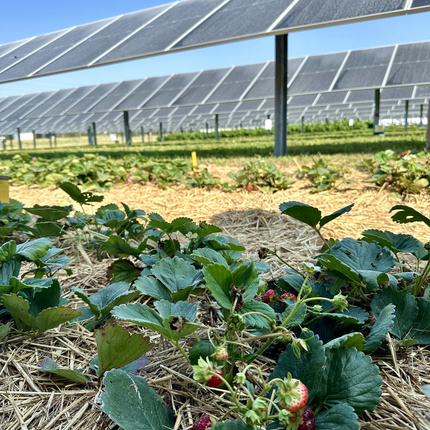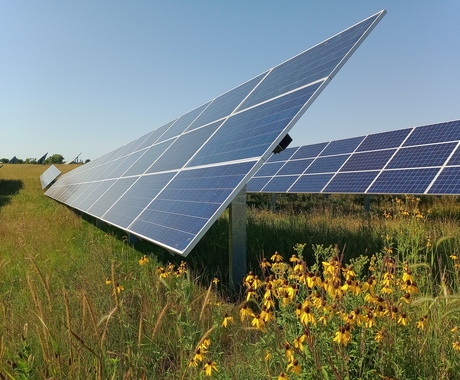Mallory Tope, policy associate, [email protected], 515.215.1294; and Rhea Landholm, communications manager, 402.687.2100, ext. 1025, [email protected]
LYONS, NEBRASKA — As the demand for renewable energy rises, the future of solar development on agricultural land is a growing concern for state and local governments.
A new fact sheet from the Center for Rural Affairs highlights the use of both solar energy generation and agricultural production on the same land.
“Dual use is a great solution to alleviate concerns about solar on agricultural land,” said Mallory Tope, policy associate with the Center for Rural Affairs. “We encourage local decision makers to consider agrisolar and dual use when drafting or amending ordinances related to solar development.”
According to the Center, dual-use solar sites offer combined renewable energy production with livestock grazing, crop production, pollinator habitats, or beekeeping.
“Dual use has many economic benefits, like increased tax revenues, lease payments to local landowners, and the ability to continue agricultural use,” said Tope. “Through creating balanced siting standards, county officials and landowners can play an active role in capturing those benefits.”
To support dual use development, counties could set additional land-use expectations, adopt zoning approaches that allow for mixed land use, or establish overlay districts for special solar permits.
“For dual-use solar to be possible, it is important to avoid overly prescriptive siting regulations such as restrictions on panel height and prohibitively specific vegetation management requirements,” said Tope.
The fact sheet addresses ordinance development such as land-use planning, definitions, zoning and sitting regulations, goals of dual use, and construction considerations.
To read and download a copy of “Best Practices for Adopting Dual-Use Solar Ordinances,” visit cfra.org/publications.



